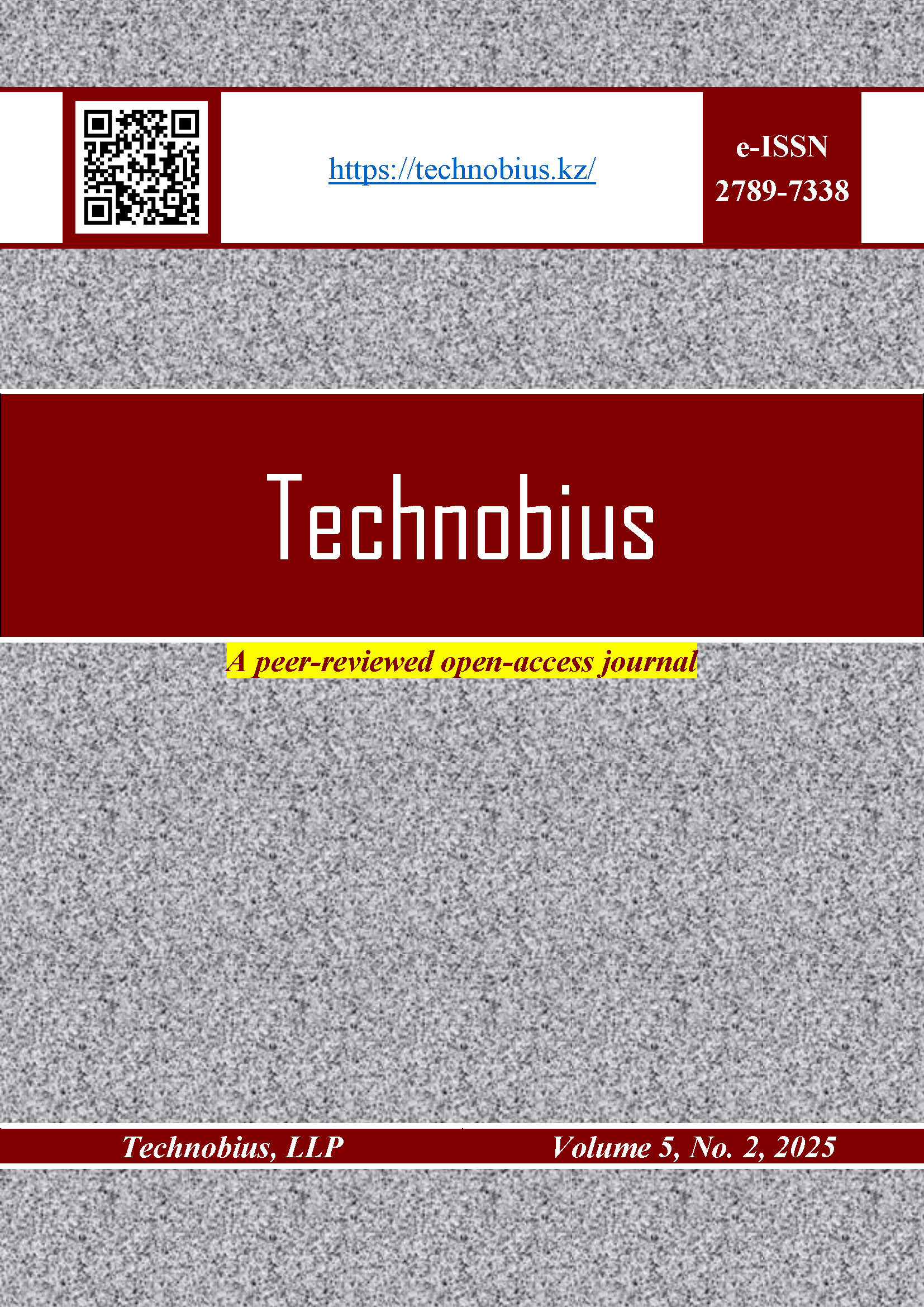Effect of paraffine wax on the mobility of injection cement mortars
DOI:
https://doi.org/10.54355/tbus/5.2.2025.0080Keywords:
modified additive, soil stabilization, cement-sand, paraffin, mechanical propertiesAbstract
This study investigates the mobility of injection mortar and the influence of a paraffin-based modified additive on its flowability. The research pursues two main objectives: to develop the optimal composition of the additive and to evaluate its effect on mortar mobility at various concentrations. The additive significantly enhances mortar mobility, achieving peak performance at a 0.6% concentration. Further increases beyond 0.6% slightly reduce mobility but maintain an overall positive effect. Additionally, higher concentrations contribute to improved solution stability, as reflected by a reduced coefficient of variation. The additive not only improves the flow characteristics of injection mortar but also ensures its homogeneity and stability. The optimal additive dosage is determined to be within the range of 0.6% to 1.0% by cement weight. The application of digital image analysis in the study demonstrated high measurement accuracy and reproducibility, confirming its suitability for evaluating construction mixtures. The proposed additive shows strong potential for use in construction applications requiring high mortar mobility without compromising structural integrity.
Downloads
Metrics
References
H. Manalu and A. S. Wismogroho, “Development of Mortar for Repair of Cracked Concrete with Injection Method,” Journal of Technomaterial Physics, vol. 4, no. 1, pp. 46–53, Feb. 2022, doi: 10.32734/jotp.v4i1.7779. DOI: https://doi.org/10.32734/jotp.v4i1.7779
M. Butakova and S. Gorbunov, “Improving Performance Characteristics of Construction Materials Manufactured by Pressing Technology,” Procedia Eng, vol. 206, pp. 814–818, 2017, doi: 10.1016/j.proeng.2017.10.556. DOI: https://doi.org/10.1016/j.proeng.2017.10.556
V. Pesaralanka and V. C. Khed, “Flowability and compressive strength test on self compacting mortar using graphene oxide,” Mater Today Proc, vol. 33, no. 4, pp. 491–495, Aug. 2020, doi: 10.1016/j.matpr.2020.05.067. DOI: https://doi.org/10.1016/j.matpr.2020.05.067
V. G. Haach, G. Vasconcelos, and P. B. Lourenço, “Influence of aggregates grading and water/cement ratio in workability and hardened properties of mortars,” Constr Build Mater, vol. 25, no. 6, pp. 2980–2987, Jun. 2011, doi: 10.1016/j.conbuildmat.2010.11.011. DOI: https://doi.org/10.1016/j.conbuildmat.2010.11.011
S. Gupta and H. W. Kua, “Effect of water entrainment by pre-soaked biochar particles on strength and permeability of cement mortar,” Constr Build Mater, vol. 159, pp. 107–125, Jan. 2018, doi: 10.1016/j.conbuildmat.2017.10.095. DOI: https://doi.org/10.1016/j.conbuildmat.2017.10.095
S. B. Singh, P. Munjal, and N. Thammishetti, “Role of water/cement ratio on strength development of cement mortar,” Journal of Building Engineering, vol. 4, pp. 94–100, Dec. 2015, doi: 10.1016/j.jobe.2015.09.003. DOI: https://doi.org/10.1016/j.jobe.2015.09.003
S. A. Ayanlere, S. O. Ajamu, S. O. Odeyemi, O. E. Ajayi, and M. A. Kareem, “Effects of water-cement ratio on bond strength of concrete,” Mater Today Proc, vol. 86, pp. 134–139, 2023, doi: 10.1016/j.matpr.2023.04.686. DOI: https://doi.org/10.1016/j.matpr.2023.04.686
W. Du et al., “Effect of temperatures on self-healing capabilities of concrete with different shell composition microcapsules containing toluene-di-isocyanate,” Constr Build Mater, vol. 247, p. 118575, Jun. 2020, doi: 10.1016/j.conbuildmat.2020.118575. DOI: https://doi.org/10.1016/j.conbuildmat.2020.118575
M. Wyrzykowski, S. Ghourchian, B. Münch, M. Griffa, A. Kaestner, and P. Lura, “Plastic shrinkage of mortars cured with a paraffin-based compound – Bimodal neutron/X-ray tomography study,” Cem Concr Res, vol. 140, p. 106289, Feb. 2021, doi: 10.1016/j.cemconres.2020.106289. DOI: https://doi.org/10.1016/j.cemconres.2020.106289
R. A. Razak et al., “Paraffin as a Phase Change Material in Concrete for Enhancing Thermal Energy Storage,” IOP Conf Ser Mater Sci Eng, vol. 743, no. 1, p. 012012, Feb. 2020, doi: 10.1088/1757-899X/743/1/012012. DOI: https://doi.org/10.1088/1757-899X/743/1/012012
V. Zetola, L. J. Claros-Marfil, A. G. Santos, and Fco. J. N. González, “Effect of Paraffin and Silica Matrix Phase Change Materials on Properties of Portland Cement Mortars,” Materials, vol. 14, no. 4, p. 921, Feb. 2021, doi: 10.3390/ma14040921. DOI: https://doi.org/10.3390/ma14040921
S. Glavina, Cement mortars and concretes with additives of modified paraffin dispersions. Moscow: Mendeleev University of Chemical Technology of Russia, 2012.
N. H. Belous et al., “The effect of composite paraffine-containing additives on properties of small-grain Portland cement concretes,” Proceedings of the National Academy of Sciences of Belarus, Chemical Series (Vescì Nacyânalʹnaj akadèmìì navuk Belarusì. Seryâ hìmìčnyh navuk), no. 4, pp. 93–98, 2014, doi: 10.29235/1561-8331-2021-57-1-94-100. DOI: https://doi.org/10.29235/1561-8331-2021-57-1-94-100
N. H. Belous, S. P. Rodtsevich, O. N. Opanasenko, and N. P. Krutko, “Influence of modifying additives on the structural characteristics and properties of portland cement concretes,” Proceedings of the National Academy of Sciences of Belarus, Chemical Series, vol. 57, no. 1, pp. 94–100, Feb. 2021, doi: 10.29235/1561-8331-2021-57-1-94-100. DOI: https://doi.org/10.29235/1561-8331-2021-57-1-94-100
Stroydk, “Cement Semey M450, M500.” Accessed: Jun. 01, 2025. [Online]. Available: https://stroydk.kz/tovary/smesi/tsement/tsement-m-450-semeycement
Snabtechmet, “Sulphuric acid H2SO4.” Accessed: Jun. 01, 2025. [Online]. Available: https://snabtechmet.kz/product/sernaja_kislota_h2so4_1_litr/
SNGgroupKZ, “Technical paraffin.” Accessed: Jun. 01, 2025. [Online]. Available: https://snggroup.kz/product/parafin-tehnicheskij
Snabservice, “Construction sand medium by GOST 8736-2014.” Accessed: Jun. 01, 2025. [Online]. Available: https://snabservice.kz/product/pesok-stroitelnyj-srednij-30-kg-gost-8736-2014/
“GOST 310.4-81 Cements. Methods for determination of bending and compressive strengths,” 2003.
ASTM, ASTM C143/C143M-15, Standard Test Method for Slump of Hydraulic-Cement Concrete. West Conshohocken, PA: ASTM International, 2015.
GOST 30744-2001. Cements. Methods of testing with using polyfraction standard sand. 2021, p. 36.
GOST 310.2-76 Cements. Test methods. 1976.
ASTAM, ASTM C109/C109M Standard Test Method for Compressive Strength of Hydraulic Cement Mortars (Using 2-in. or [50-mm] Cube Specimens). West Conshohocken, PA: ASTM International, 2020.
Published
How to Cite
License
Copyright (c) 2025 Zhibek Zhantlessova, Rauan Lukpanov, Duman Dyussembinov, Serik Yenkebayev, Denis Tsygulyov, Murat Karacasu

This work is licensed under a Creative Commons Attribution-NonCommercial 4.0 International License.
Funding data
-
Ministry of Education and Science of the Republic of Kazakhstan
Grant numbers AP19680068








